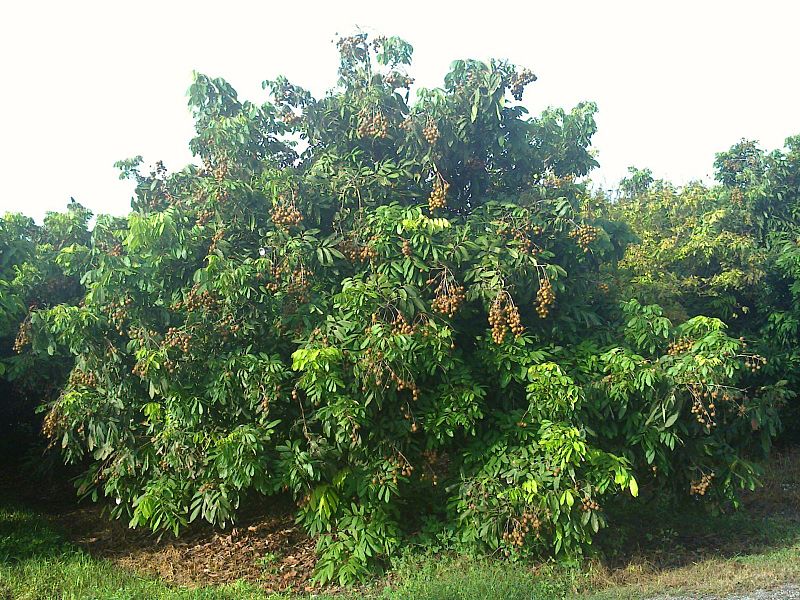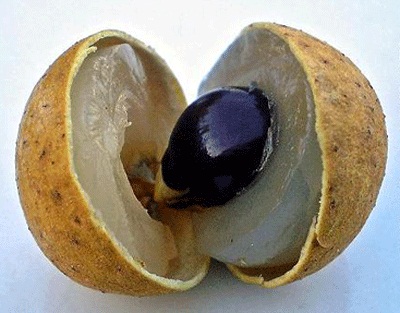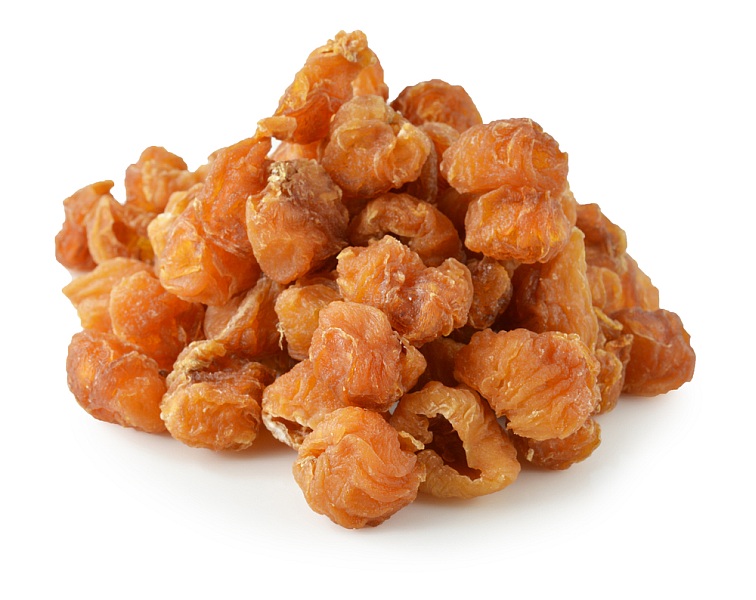 Dimocarpus
longan. Euphorbia longan, Nephelium longana 龙
眼 肉 Lóng
yǎn ròu-
"Dragon eye flesh"
Dried Longan aril
Family: Euphorbiaceae
Dimocarpus
longan. Euphorbia longan, Nephelium longana 龙
眼 肉 Lóng
yǎn ròu-
"Dragon eye flesh"
Dried Longan aril
Family: Euphorbiaceae
Commonly known as the longan, is a tropical tree that produces edible fruit. It is one of the better-known tropical members of the soapberry family, to which the lychee also belongs. It is native to Southern Asia. It is called Dragon eye because it resembles an eyeball when its fruit is shelled (the black seed shows through the translucent flesh like a pupil/iris).
PART USED: Fruit
 FLAVOR:
Sweet. Pleasant CHANNEL: Heart,
Spleen
FLAVOR:
Sweet. Pleasant CHANNEL: Heart,
Spleen FUNCTIONS
GROUP: Nourishing Blood
1. Invigorate the Heart and Spleen.[2,3] Tonifies the Spleen.[1,4] Cultivates the Heart.[1] Heart tonic.[4] Energy tonic.[4]
2. Calm the mind. Calm the Spirits. Supplements the intellect.[1]
INDICATIONS
1. Deficiency of Vital energy and Blood manifested as palpitation, insomnia, amnesia and dizziness, or during convalescence and after childbirth.[2,3] Forgetfulness, nervousness and fatigue. Anemia.[1] Hyperactive mental activity, forgetfulness.[1]
2. Excessive menstrual flow.
3. Insomnia.[4]
CONTRAINDICATIONS: Internal Phlegm-Fire, abdominal swelling and obstructions.
- Deficiency of Spleen Qi and Heart Blood: Tonifies the Qi and Blood, strengthens the Spleen, nourishes the Heart and calms the Shen Ginseng & Longan- Gui pi wan.
PREPARATIONS: Decoction 6-5 g; up to 30-60 g.[3] Boiled or steamed or immersed in wine.[2] Decoction 4-9 g.[1]
Fruit 3-9 g.[2] Longan jelly- Mix 500 g longans with 500 g sugar and steam them.[4]


- Dizziness and underweight- Steam 15 g longans with 30 g lean pork, 2 fresh ginger slices, and an adequate amount of rice wine. Eat once a day.[4]
- Dizziness and edema after childbirth- Take 1 spoonful longan jelly with warm water.[4] Or boil 15 g longans with 5 red dates, 30 g brown sugar, and 6 g fresh ginger. Drink it as soup once a day.[4]